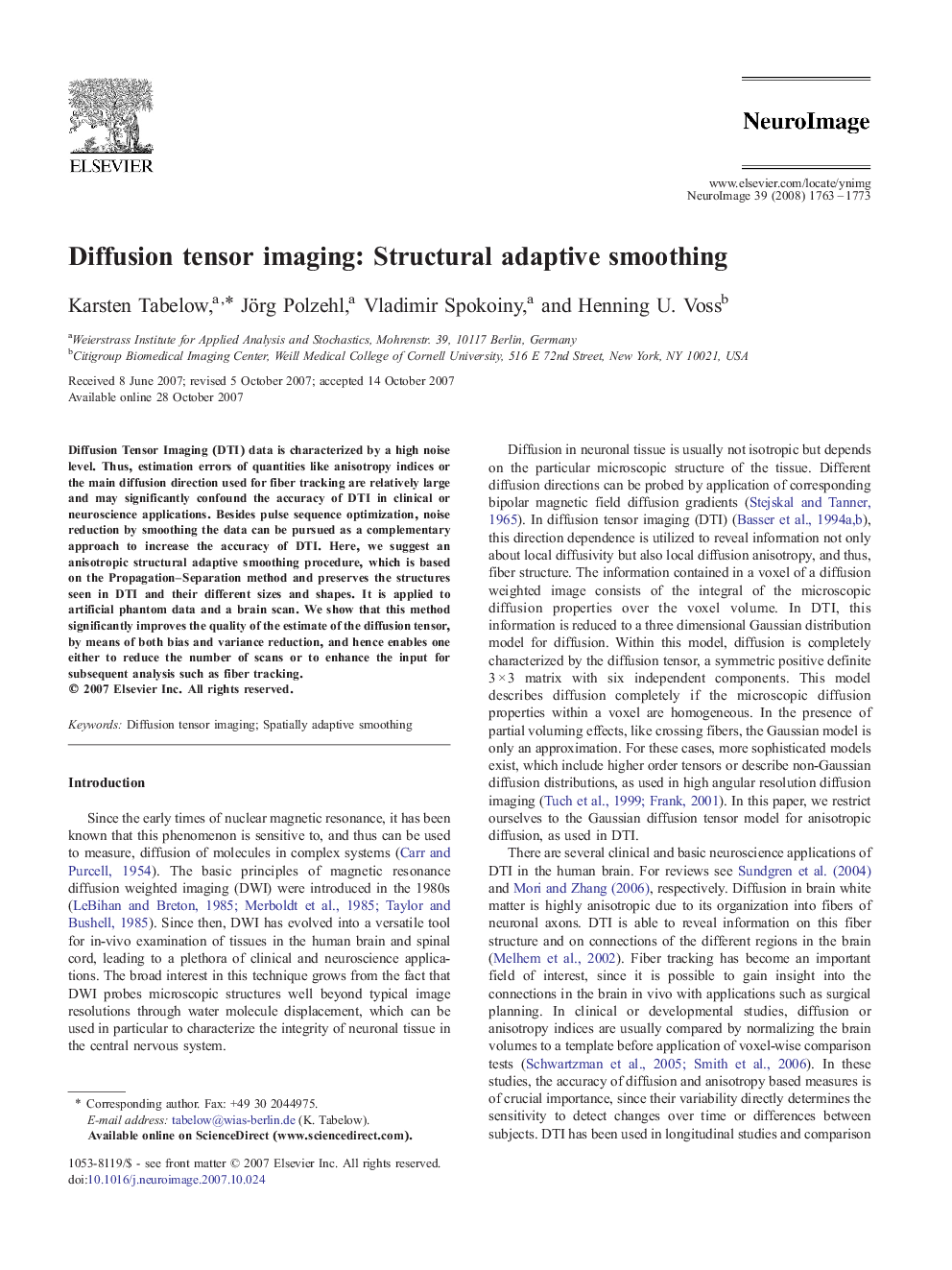| Article ID | Journal | Published Year | Pages | File Type |
|---|---|---|---|---|
| 3073388 | NeuroImage | 2008 | 11 Pages |
Diffusion Tensor Imaging (DTI) data is characterized by a high noise level. Thus, estimation errors of quantities like anisotropy indices or the main diffusion direction used for fiber tracking are relatively large and may significantly confound the accuracy of DTI in clinical or neuroscience applications. Besides pulse sequence optimization, noise reduction by smoothing the data can be pursued as a complementary approach to increase the accuracy of DTI. Here, we suggest an anisotropic structural adaptive smoothing procedure, which is based on the Propagation–Separation method and preserves the structures seen in DTI and their different sizes and shapes. It is applied to artificial phantom data and a brain scan. We show that this method significantly improves the quality of the estimate of the diffusion tensor, by means of both bias and variance reduction, and hence enables one either to reduce the number of scans or to enhance the input for subsequent analysis such as fiber tracking.
